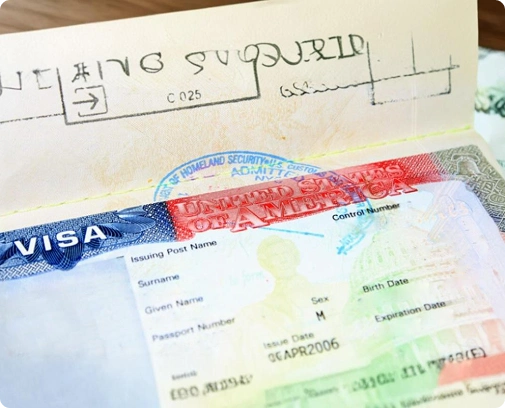F1
Your Gateway to Studying in the U.S
About the F1 visa
Benefits of the F-1 Visa
- Allows you to study in a world-renowned education system.Provides the opportunity to gain valuable work experience in the U.S. after completing your studies (through OPT).
- Opens the door for possible future U.S. employment or immigration opportunities.
- The purpose of an F-1 visa is to allow foreign nationals to enter the United States to study full-time at an accredited academic institution — such as a college, university, high school, private elementary school, seminary, conservatory, or language training program.

Key Features of the F-1 Visa
It is designed for students who wish to pursue academic studies or language training in the U.S. The F-1 visa is specific to full-time students, and the institution they attend must be approved by the U.S. government (designated by the SEVP – Student and Exchange Visitor Program).
To qualify for the F-1 visa, you must be accepted into a U.S. school that is authorized by the Student and Exchange Visitor Program (SEVP). You also need to prove that you have sufficient financial resources to support your education and living expenses in the U.S.
F-1 visa holders are allowed to stay in the U.S. for the duration of their academic program, plus any authorized practical training period (such as Optional Practical Training, or OPT), and an additional 60 days after completing their program to prepare for departure.
F-1 students are allowed to work under certain conditions:
On-campus employment: Limited to 20 hours per week during the school year and full-time during breaks.
Optional Practical Training (OPT): Allows students to work in the U.S. for up to 12 months after completing their studies, in a field related to their major. Students in certain STEM (Science, Technology, Engineering, and Mathematics) fields may be eligible for a 24-month extension.
F-1 visa holders can travel within the U.S., but if they leave the country, they need to obtain a new F-1 visa to re-enter (unless the visa is still valid). Before traveling, it’s important to ensure your Form I-20 is signed by a Designated School Official (DSO).
Visa Requirements
To apply for an F-1 visa, you’ll need to submit an application, including proof of acceptance into a U.S. school (via the Form I-20), a valid passport, proof of financial support, and take part in a visa interview at a U.S. embassy or consulate.
